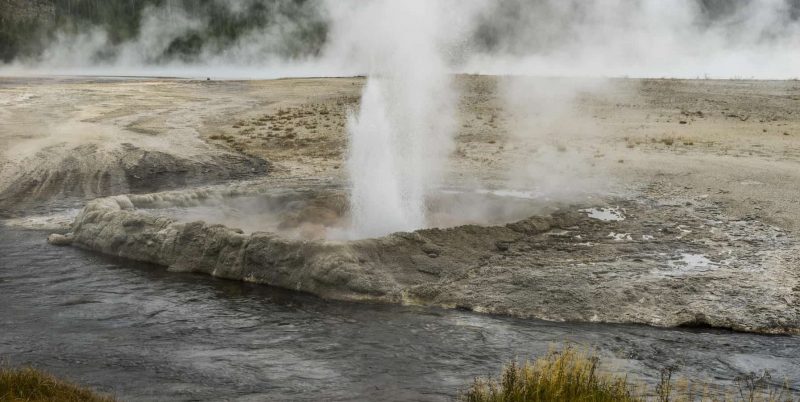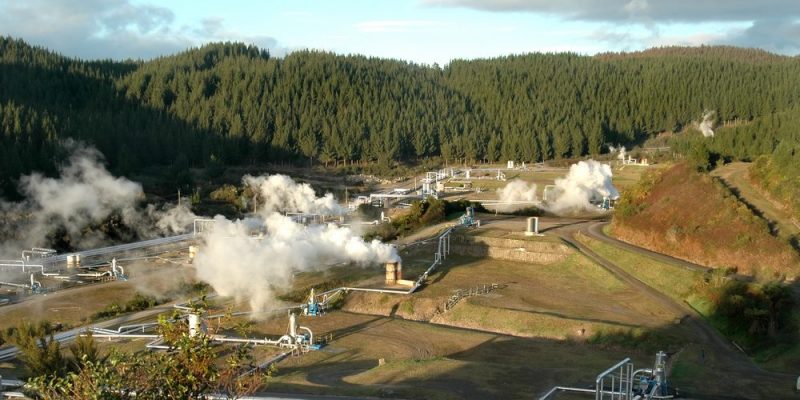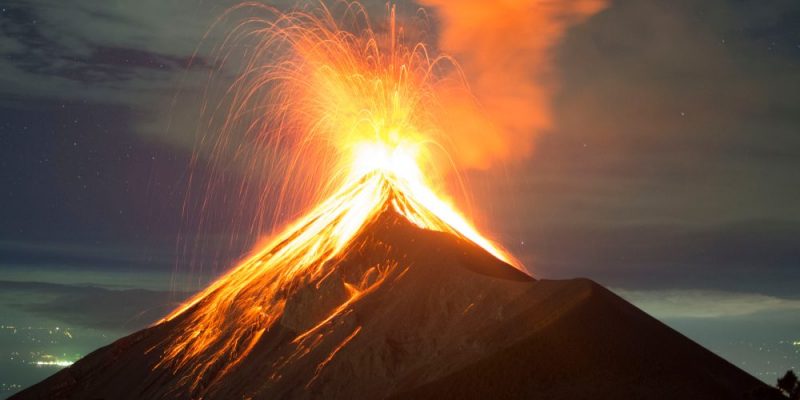We explain what geothermal energy is, and how it is obtained. Its advantages and disadvantages. Examples of geothermal energy.

What is geothermal energy?
Geothermal energy is a more or less renewable type of energy, of volcanic origin that is, it consists of taking advantage of the internal heat of the Earth to extract high-temperature water from the subsoil, from which heat energy can be extracted or which can be used to generate electricity.
As we get closer to the planet's core, temperatures increase considerably, as there is more pressure, more gravity, and less distance from the molten metal core that is the heart of the Earth. That's why Numerous deposits of boiling water can be found underground, which can be released and led to the surface, giving rise to large jets of steam, geysers and thermal waters that, since ancient times, have been used by humanity for various purposes. This type of deposits are very common in areas of high volcanic activity.
This type of energy is popular because it comes from a renewable source, although there are complications that can lead to the extinction of the deposits. These, by the way, can be of three types:
- Dry. Reservoirs of steam and hot gas, devoid of water in a liquid state.
- Of hot waters. They can be underground aquifer sources or deposits, whose waters are compressed at high temperatures.
- Geysers. Thermal reservoirs whose pressure is so high that they must sporadically expel steam or boiling water to the surface in large jets.
How is geothermal energy obtained?
As has been said, geothermal energy comes from the waters of the Earth's subsoil, whose pressure and temperature occur naturally. In these deposits, geothermal plants are usually installed that release water or steam, taking advantage of it to generate electricity or to extract heat and redirect it and subsequently reinject water at ordinary temperature into the well, to continue the cycle.
There are also more home-made ways of obtaining it, such as heating by geothermal pumps, which allows gas or boiling water from the subsoil to be used to provide heat to homes or entire buildings, if not to air-condition greenhouses and agricultural drying facilities.
Advantages of geothermal energy
The main advantages of this type of energy are:
- It's natural. It comes from the planet itself, so it does not pose a technological or biological risk to consider.
- It's economical. It does not require constant raw materials, nor does it depend on an international input market that suddenly makes its usefulness more expensive.
- It is ecological. It does not throw large waste into the environment, nor does it generate annoying noises, and the emission of CO2 and other greenhouse gases that accompany it is lower than that generated by other forms of energy production, such as the burning of fossil fuels. On the other hand, it takes advantage of modest areas, without the need to dam rivers or cut down forests.
- It is reliable. In terms of the human scale, it is basically an inexhaustible source of energy.
Disadvantages of geothermal energy

At the same time, geothermal energy has the following setbacks:
- Deterioration of the landscape. The installation of plants usually has a cost in terms of landscape, which impacts tourism to some extent.
- Indirect pollution. The water extracted from the subsoil may be accompanied by polluting substances that, when evaporated, must be disposed of in some way and may be toxic.
- Requires specific conditions. It cannot be done anywhere, but in volcanic areas (except for the geothermal air conditioning pump).
- Risk of earthquakes. Sometimes, water reinjected into the well can cool the magma, producing microseisms and exterminating the reservoir forever.
What is geothermal energy used for?
This type of energy can be used directly, to heat buildings, dry agricultural or industrial inputs even cooking food. It is an immediate heat source.
In geoelectric plants, on the other hand, said heat is used to boil water (or the steam directly extracted from the well is used) to mobilize a complex of turbines that, as in nuclear or fossil fuel electrical installations, generate electricity. usable.
Examples of geothermal energy

Some examples of this type of energy are:
- The Geysers. A set of geoelectric power plants 116 km from the city of San Francisco in the United States, considered the largest complex of its kind in the world. It can produce over 950 MW of electricity at 63% of its productive capacity, taking advantage of the steam emanated from more than 350 active geysers.
- The Timanfaya Oven-Roaster. In the Canary Islands, he takes advantage of the magmatic activity of the region for the oven of the “El Diablo” restaurant for artisanal food, on the island of Lanzarote. This oven takes advantage of a well that goes directly into the subsoil.
- The volcanoes. The best known and most devastating natural manifestation of geothermal energy consists of explosions of subsurface matter that spew boiling magma (lava), toxic gases and suspended ash into the environment. They have a gigantic but untappable energy potential.





